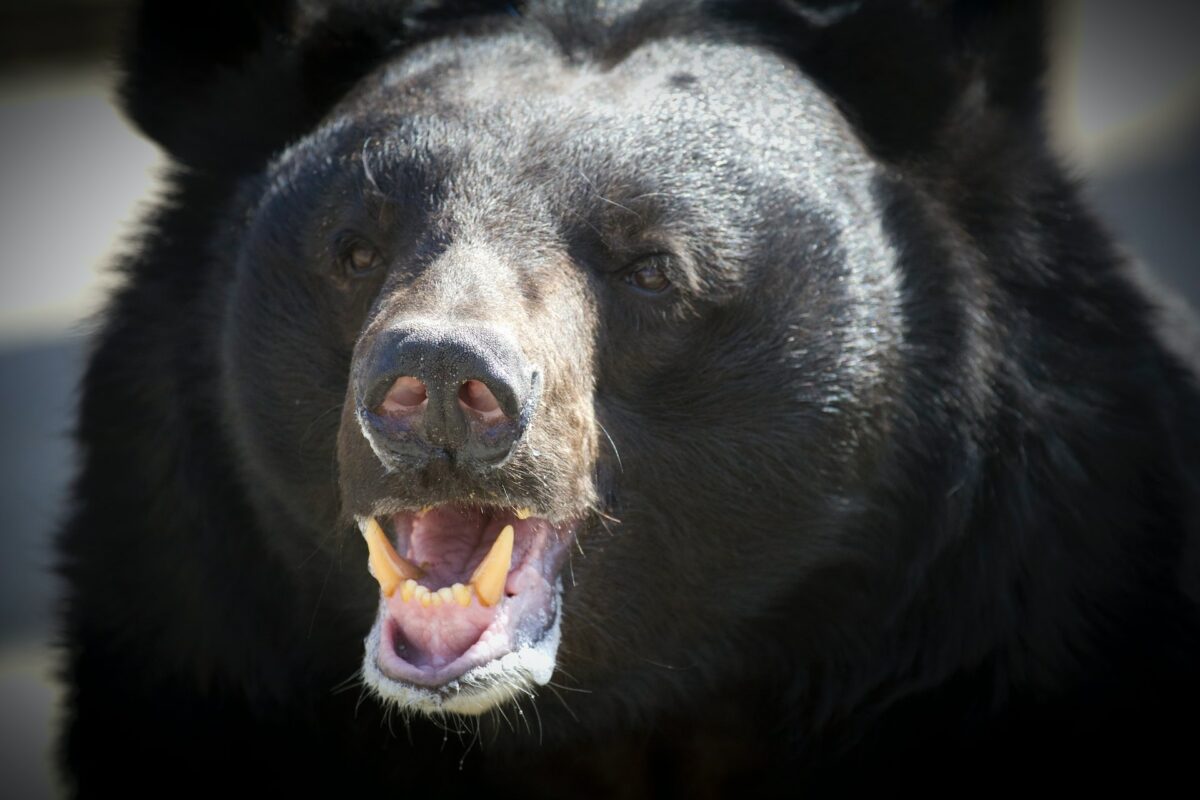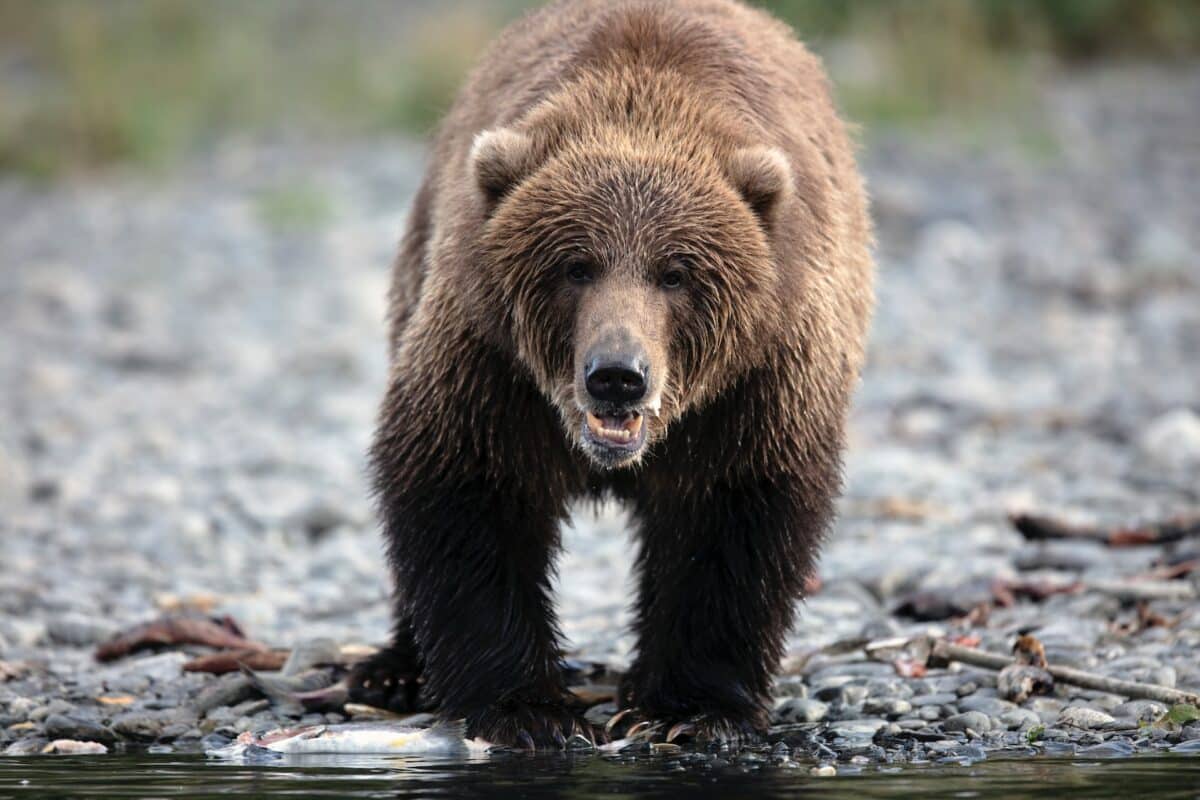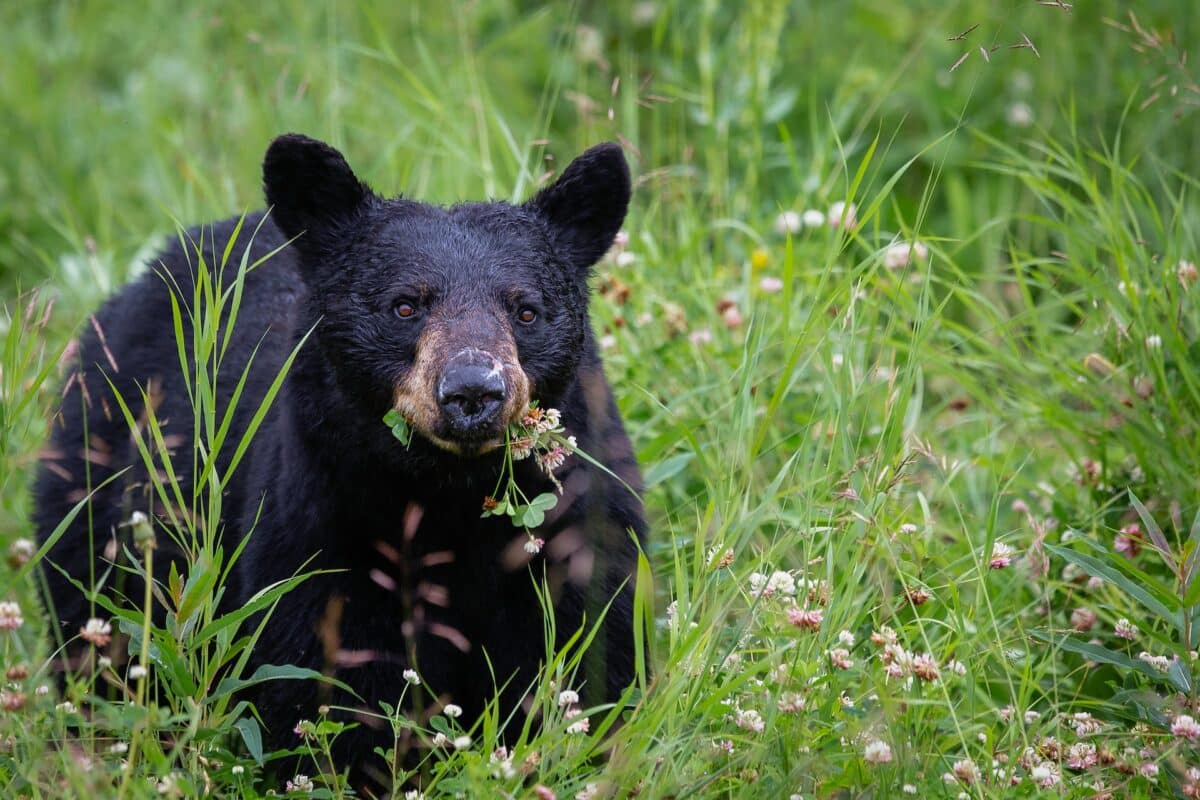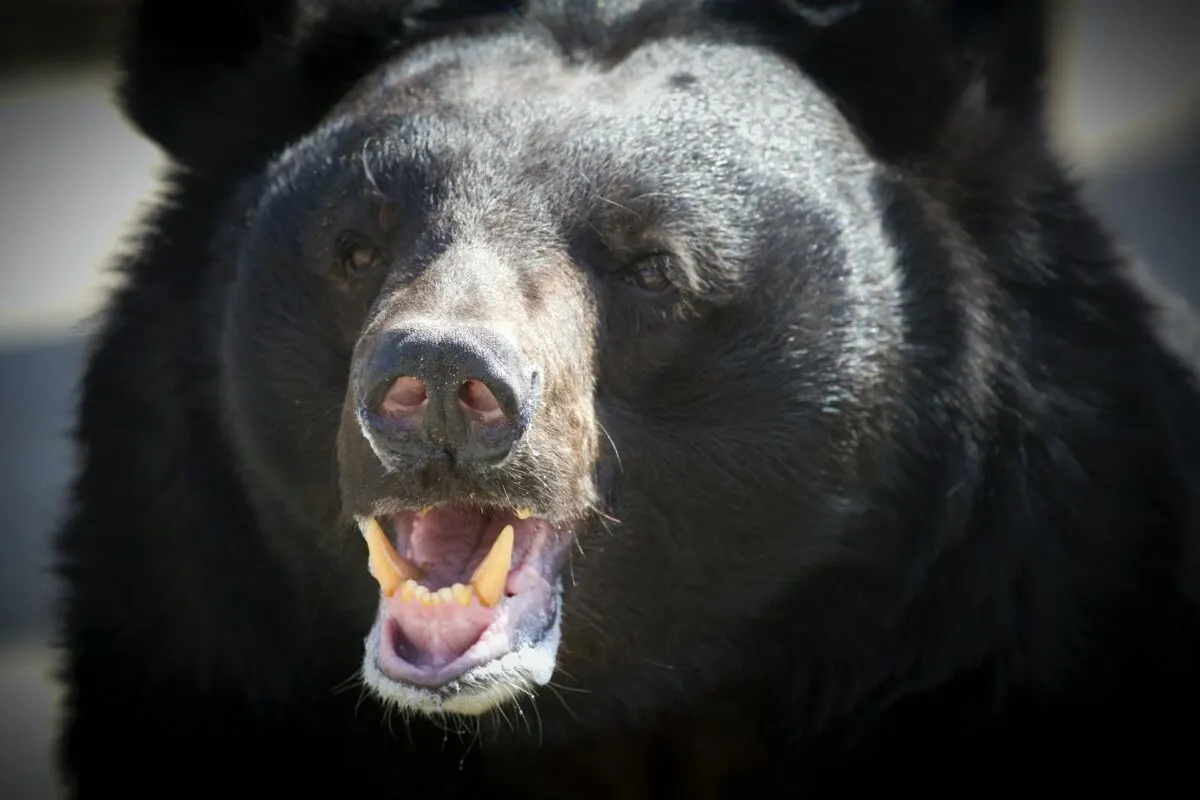Bears are powerful and majestic animals known for their immense power and hunting capabilities. A key feature that makes a bear a predator is their teeth. Bear teeth are sharp, strong, and perfectly adapted for hunting and survival in the wild.
The structure of bear teeth is adapted to rip apart flesh and break bones effortlessly. They are incredibly sharp, with pointed tips and serrated edges that make them ideal for slicing through meat. They rely on their teeth to catch prey, defend themselves from other animals, and break through rigid materials to access food. Without their teeth, bears would struggle to survive in the wild.

Want to jump ahead? Click below
Types Of Bear Teeth

When it comes to bear teeth, there are four different types: incisors, canines, premolars, and molars. Each of these teeth has a unique function and is essential to a bear’s ability to hunt and survive in the wild.
- Incisors
The bear’s incisors at the front serve the purpose of biting and cutting. These teeth are sharp and pointed, perfect for tearing through flesh and other soft materials. Bears use their incisors to catch prey and to break through rigid materials, such as bark and roots.
- Canines
Next To incisors are canines that are pointy and long. They are the most recognizable of all bear teeth and are often used in popular culture to symbolize the strength and power of these animals. Canines are used for biting, tearing, catching, and holding prey.
- Premolars
The premolars are situated between the canines and molars, and their function is to grind and crush food. These teeth are broader and flatter than the canines and perfect for breaking down rigid materials like bone and plant matter.
- Molars
Molars are the most significant and potent of all the bear teeth, located in the back of the mouth. They are used for grinding and crushing and are essential for breaking down rigid materials. Bears use molars to crush bones and grind tough plants like nuts and seeds.
Difference Between Bear Teeth and Human Teeth

Bears have a unique set of teeth that are perfectly adapted for their hunting and survival needs. While human teeth are designed for biting and grinding food, bear teeth are designed to rip and tear flesh and crush bone.
Bear teeth have a significantly distinct structure compared to human teeth. For one, bear teeth are much larger and more robust than human teeth. They have a greater surface area and are much more robust, allowing them to withstand the tremendous force required to catch and kill prey.
The anatomy of bear teeth is also different from human teeth. They have a layer of enamel covering the tooth’s outer surface, much thicker than the enamel found on human teeth. Additionally, the dentin layer of bear teeth is much more comprehensive, giving them greater strength and durability.
The Different Types Of Dentition In Bears

Bears also have different types of dentition, depending on their diet and hunting habits. Some, such as the polar bear, have a hypercarnivorous dentition, meaning they have many sharp, pointed teeth designed to tear through flesh. Others, such as the panda, have herbivorous dentition, meaning they have flatter teeth for grinding and crushing plant matter.
The Function

A. Feeding Habits of Different Bear Species
Bears have an omnivorous diet, consuming both plant and animal matter. Nevertheless, the diet of each bear species is unique, influenced by their surroundings and habitat. For instance, polar bears feed on seals, while grizzly bears consume berries, nuts, and fish. Giant pandas, on the other hand, especially consume bamboo.
B.How Bear Teeth Are Adapted to Their Diet
They are adapted to help them crush and grind their food. Their molars are broad and flat, with ridges that help break down rigid plant material. In contrast, their canine teeth are pointed and sharp, allowing them to tear through meat and skin. The size and shape of their teeth also vary depending on their diet. For example, the teeth of a polar bear are more extended and sharper than a panda’s, reflecting their carnivorous diet.
C. The Use for Self-Defense
While bear teeth are mainly used for feeding, they can also be a valuable tool for self-defense. When threatened, bears can use them to defend themselves against predators or other bears. However, they are unlikely to attack humans unless they feel threatened or cornered.
The Evolution of Bear Teeth

A. The Fossil Record
The fossil record provides valuable insights into the evolution of bear teeth over time. The oldest known bear fossils date back to the late Oligocene epoch, around 28 million years ago. These early animals had teeth similar to modern ones, suggesting their dental adaptations were already well-established.
B. The Changes Over Time
As bears evolved and adapted to different environments, their teeth also changed. For example, the teeth of cave bears, an extinct species that lived during the Pleistocene epoch, were much larger and more robust than modern bears.
C. The Evolutionary Advantages of Different Types
The shape and size of teeth provide them with various evolutionary advantages. For example, predatory bears’ sharp, pointed teeth allow them to catch and kill prey quickly. In contrast, herbivorous bears’ broad, flat molars help them grind down rigid plant material. These adaptations have allowed bears to thrive in various environments and play an essential role in their ecosystems.
Threats to Bear Teeth

A. Habitat Destruction
One of the biggest threats to bears is habitat destruction. As humans continue encroaching on bear habitats, their food sources become scarce, and they may need help finding enough food to survive. This can lead to malnourishment and tooth decay, impacting their ability to hunt and defend themselves.
B. Climate Change
Climate change is also a significant threat to bears. As temperatures rise, bear habitats may become unsuitable for their survival. This can lead to changes in their diet and a decrease in population size.
C. Poaching
Poaching is another major threat to bear populations. Many people hunt bears for their fur or other body parts, which can be sold on the black market. Such circumstances can result in the eradication of bear populations.
If you wish to learn further about bear teeth, click here.
Wrapping Up Bear Teeth
In conclusion, bear teeth are a fascinating aspect of these majestic animals. Their teeth are designed for specific purposes, such as cutting meat, crushing bones, and tearing through thorny vegetation. By understanding the structure and function of bear teeth, we can gain insight into their diet and behavior in the wild.
The use of bear teeth in traditional medicine and jewelry highlights the cultural significance of these animals in many societies. It’s essential to acknowledge that bears are untamed creatures and deserve to be cautiously approached from a safe distance. The teeth of a bear can be dangerous if provoked, and it’s essential to take precautions when visiting bear habitats. Overall, bear teeth are an intriguing part of these magnificent creatures, and studying them can deepen our appreciation and understanding of these animals.
Thanks for following along with us! Next up, All About Deer Poop.
- Watch Hippo Mother Chases Crocodiles To Protect Her Dead Child - April 15, 2024
- Watch Elephants Ask Rescuer To Play Piano - April 12, 2024
- Top Techniques To Cleaning Up Dog Vomit - April 11, 2024


